What is a Feature Priority Matrix?
A feature priority matrix is a tool used in product management that can help teams determine which features should be developed first. By comparing the importance and implementation difficulty of each feature on a two-dimensional chart, we can create a clear, visual way to display the priority each feature should have. Here are the main components of the feature priority matrix.
1. Importance
This is one dimension of the matrix, usually represented by the vertical axis. This represents the importance of each feature in meeting user needs and achieving business goals.
2. Implementation Difficulty
This is another dimension of the matrix, usually represented by the horizontal axis. This represents the number of resources required to implement each feature, including time, money, manpower, etc.
3. Feature List
These are all the features or requirements you want to prioritize. They are placed on the matrix according to their importance and implementation difficulty.
In the matrix, features in the upper left corner (high importance, low implementation difficulty) should be implemented first, while features in the lower right corner (low importance, high implementation difficulty) may need to be postponed or reconsidered.
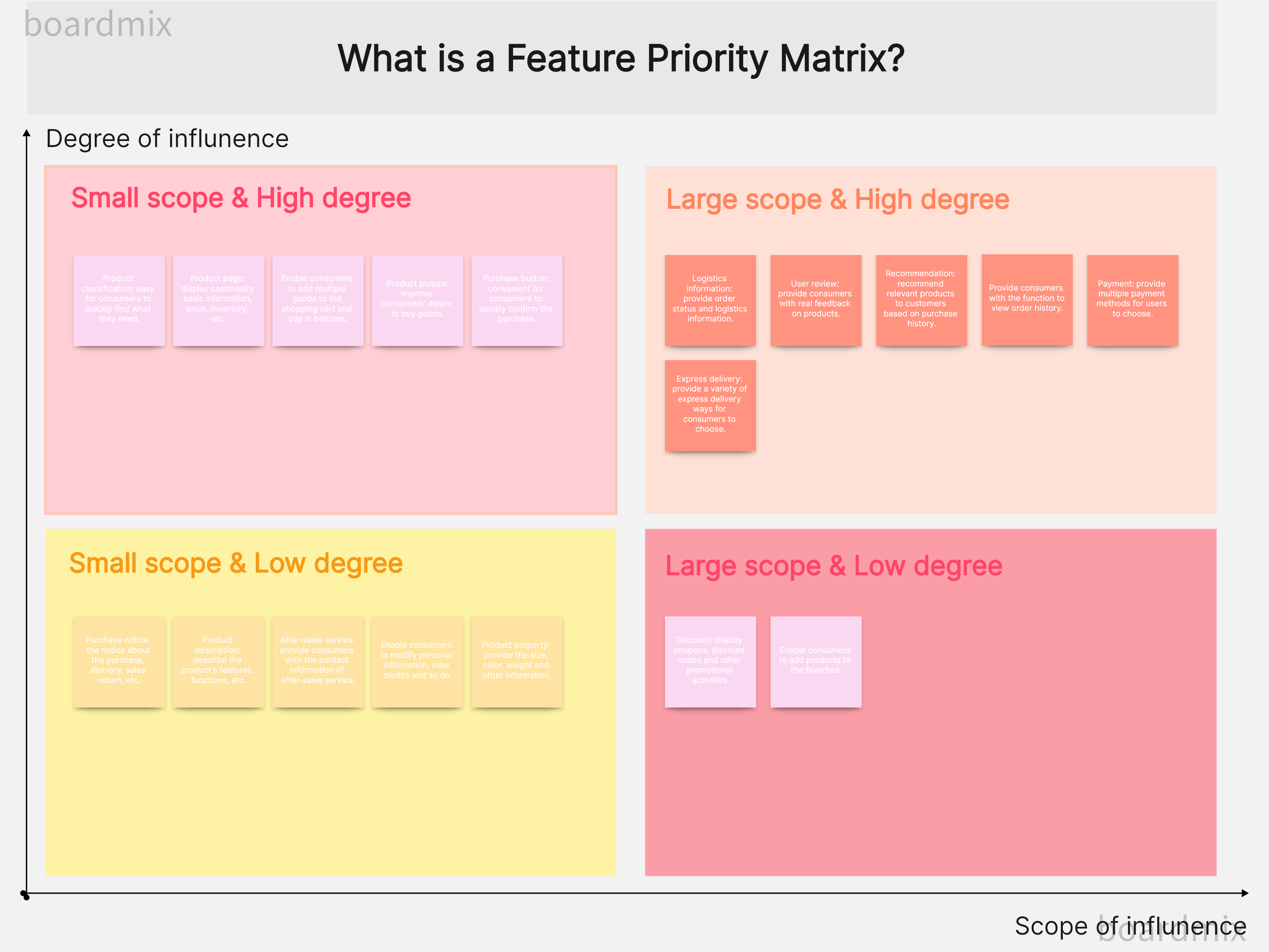
Why is it important to prioritize features?
1. Limited Resources
Whether it's time, funds, or human resources, they are all limited. By prioritizing, we can ensure that these precious resources are focused on the most important features.
2. Improve Customer Satisfaction
Understanding and developing the most valuable features for customers first can significantly improve customer satisfaction. Without priorities, you may fall into the trap of spending a lot of time developing features that customers don't care much about.
3. Reduce Risk
A feature may bring a high risk for various reasons (such as technical complexity, high cost, etc.). Prioritizing features can help us identify these risks and adjust our development plans accordingly.
4. Reach Market Faster
Usually, launching a product with core features earlier is more important than launching a product after finishing all planned features. Prioritization can help us determine which features should be developed first so that we can launch the product as soon as possible.
5. Boost Team Morale
Prioritizing features can provide clear direction and let team members understand how their work creates value for the product or service. This not only improves work efficiency but also boosts team morale.
Overall, prioritizing features can help us develop effective development plans in a resource-limited and competitive environment and ensure our success in meeting customer needs, reducing risk, and improving efficiency.

How do you determine feature priority?
Determining feature priority is a key step in product management. Here are some commonly used steps.
1. Understand Customer Needs
First, you need to understand the needs of your customers. Through market research, interviews, user feedback, and other methods, understand what your target user group cares about and needs.
2. Evaluate Impact
Next, evaluate the impact of each feature on the overall effect of the product. Ask yourself, what impact does this feature have on the long-term development of the product? How will it improve user experience?
3. Consider Implementation Difficulty
Consider the implementation difficulty of each feature. How long does it take to develop this feature? How many resources are needed? At the same time, consider any technical challenges that this feature may bring.
4. Sort Priorities
Finally, sort each feature based on the above factors. In many cases, trade-offs may be necessary. For example, one feature may be very important but also difficult to implement. Conversely, another feature may be easier to implement but might have a smaller overall impact on the product.
Remember that determining feature priority is not set in stone; it should be adjusted with changes in market trends, user needs and business goals.
Examples of Feature Priority Matrix in Practice
The feature priority matrix is a powerful tool to help you determine which features to prioritize during the development process. Here are some examples of feature priority matrices in practice.
1. RICE Scoring Model
The RICE scoring model is a feature prioritization method proposed by Intercom, mainly considering four factors: Reach, Impact, Confidence, and Effort.
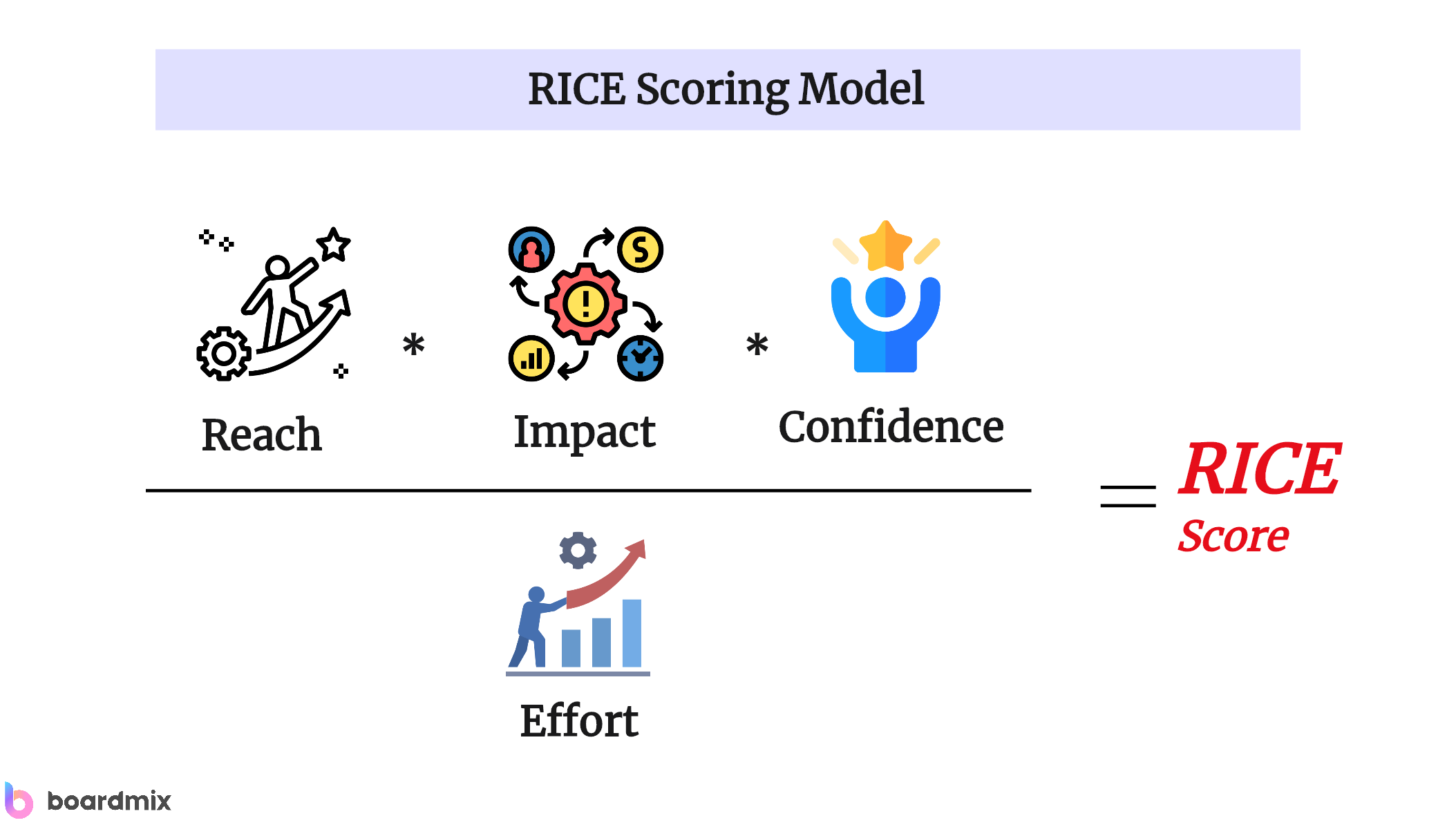
Reach measures how many users this feature will affect in a given period; Impact is a prediction of how much impact this feature will have on each user; Confidence is the credibility of the above two evaluations; Effort is the workload required to complete this feature.
Multiplying these four factors can give each feature's RICE score for sorting.
2. 2x2 Matrix Based on Value and Complexity
This is a simple but very effective method. The core idea is to place each feature in a 2x2 matrix according to its expected value and implementation complexity.

The four quadrants of the matrix represent "high value, low complexity", "high value, high complexity", "low value, low complexity" and "low value, high complexity". In this way, it can be seen which features should be prioritized.
3. Importance-Urgency Matrix
This matrix is also known as the Eisenhower Matrix, which classifies tasks based on their importance and urgency. According to this division, tasks can be divided into "important and urgent", "important but not urgent", "not important but urgent" and "not important and not urgent".
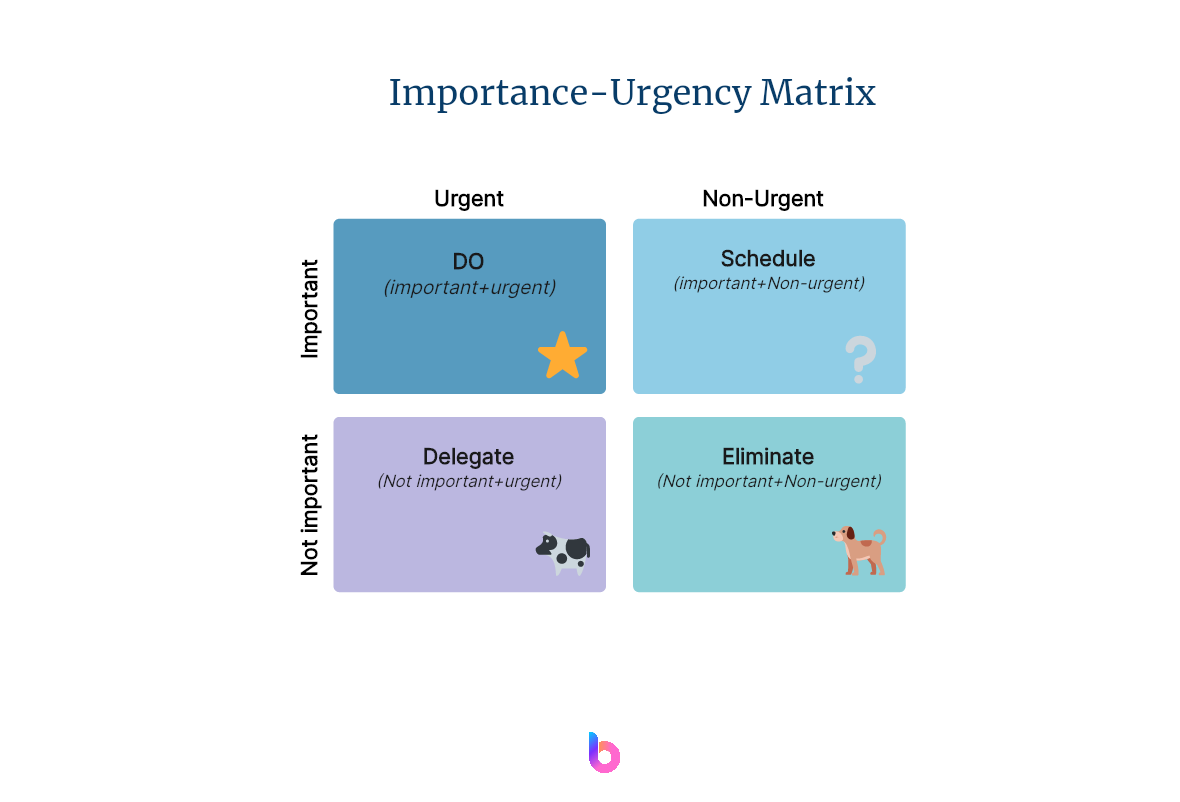
For the priority of features, consider "important and urgent" features first, then "important but not urgent" features, "not important but urgent" features rank third, and finally consider "not important and not urgent" features.
4. Kano Model
The Kano model helps determine its priority by categorizing features. These categories include basic features (basic functions consumers expect), performance features (the more the better or less good), and excitement features (consumers may not think about it, but it will surprise them).
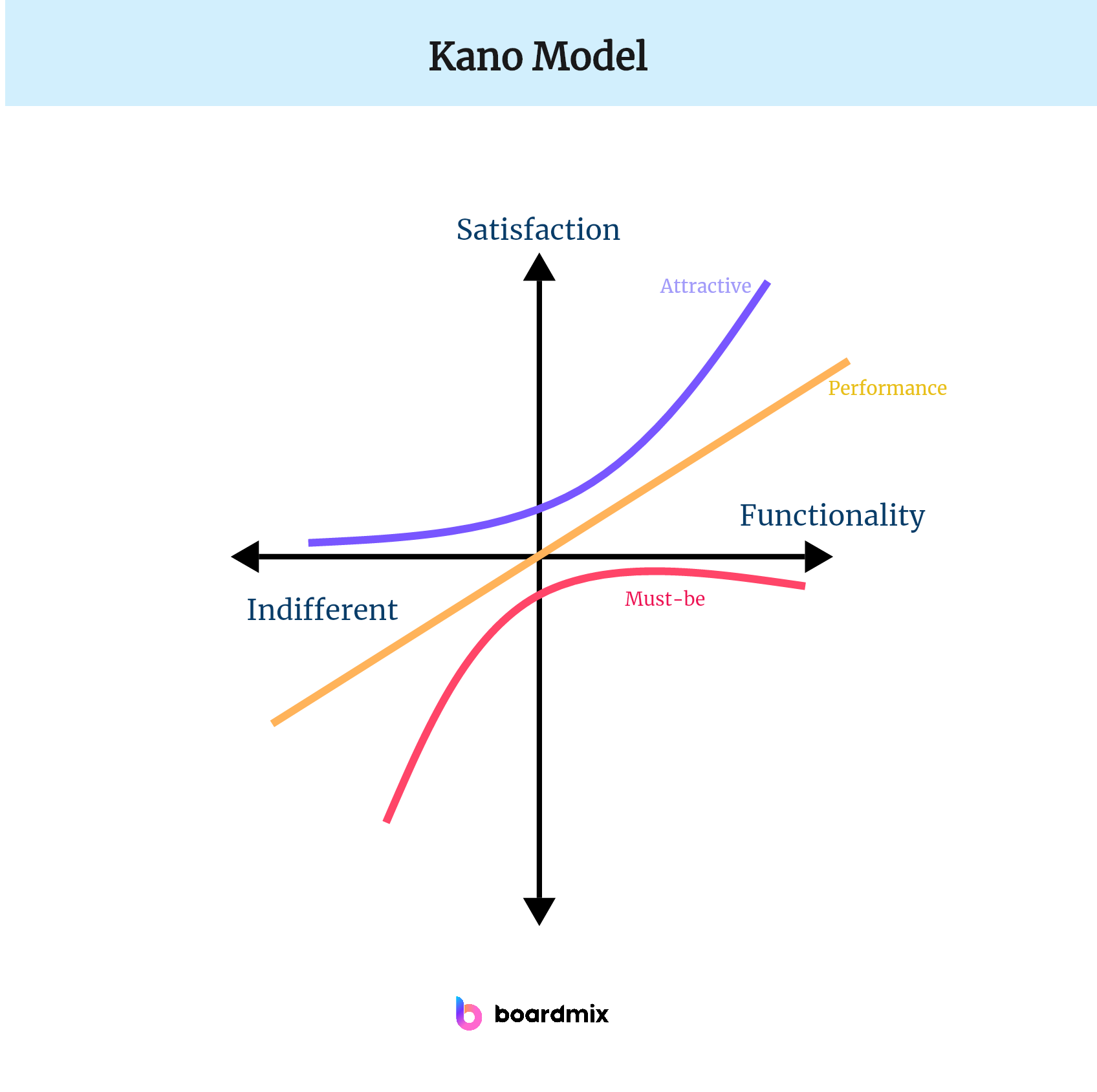
Basic features need to be implemented first, followed by performance characteristics, and finally excitement characteristics.
The above are useful examples of feature priority matrices. Choose the one that suits you best according to your specific needs. Next, let's look at how to apply Prioritize Features in specific case practices.
How to Prioritize Features for a Product Roadmap
Creating a product roadmap and prioritizing its features is a strategic decision-making process. Here are some steps to help you prioritize features.
1. Clarify Your Product Vision and Strategy
Before starting to plan your product roadmap, you must first clearly understand your product vision and strategy. This should include the goals you hope the product will achieve in the future, and how you plan to achieve these goals.
2. Understand User Needs
Understand deeply who your users are, their needs, and what their pain points are. You can collect this information through user interviews, feedback, surveys, etc.
3. Collect and List All Possible Features
Collect all possible features with your team (such as product management, design, engineering, sales, etc.). At this stage, feasibility should not be overly considered; any idea should be taken into account.
4. Evaluate Features
Each feature should be evaluated based on its expected impact (such as potential revenue generated, improved user experience, etc.), and the difficulty of implementing the feature.
5. Use a Priority Model
Using a priority model such as RICE or weighted scoring can help you quantitatively rank each feature based on pre-set criteria.
6. Create Your Roadmap
Based on your ranking, you can start creating your product roadmap. This should include which features will be developed in the coming period and expected completion times.
7. Continually Check and Update Your Roadmap
The product roadmap is not set in stone; it should be updated according to market changes, new user feedback resource availability, etc.
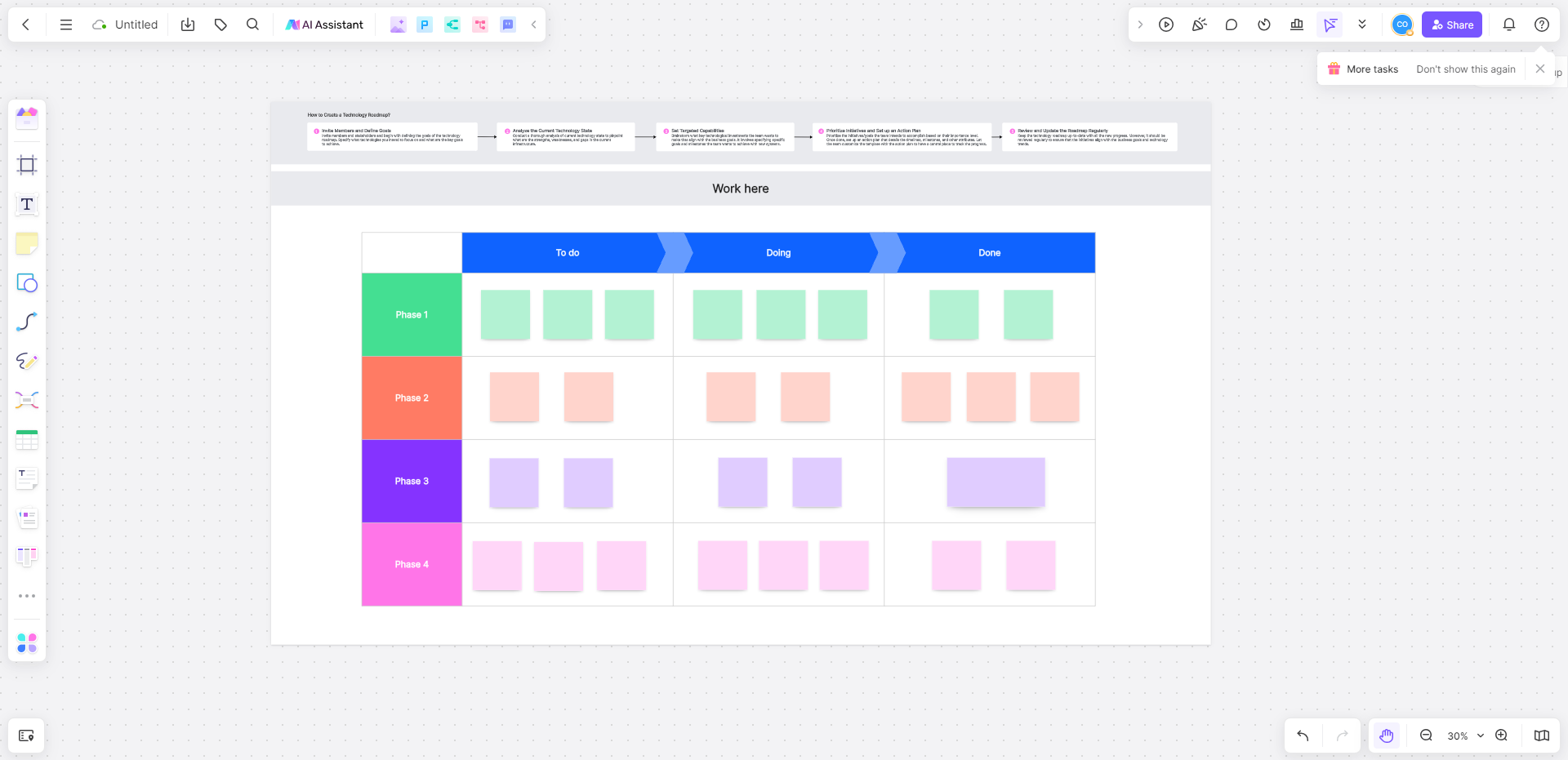
Each of these steps requires close collaboration with your team and meticulous work. However, if done correctly, prioritizing features can greatly assist in determining the direction of product development and ensuring resources are used effectively.
How to Prioritize Features in a Product Backlog
Prioritizing features in a product backlog is a key part of product management. This requires balancing factors such as user needs, team capabilities, and business goals. Here are the basic steps for sorting.
1. Collect All Features and Requirements
Before you start prioritizing, you need to have a complete list of requirements. This can come from various sources such as customer feedback, market research, team suggestions, etc.
2. Define Evaluation Criteria
You need a method to determine the importance of features. This may involve many factors such as the urgency of customer needs, the workload required to implement specific features, or its impact on your business goals.
3. Score Each Feature
Using your defined criteria, score each feature. For example, you might rate each feature based on the urgency of customer needs, impact, workload, and risk.
4. Sort by Score
Sort features by a score from high to low. The highest score should be the highest priority task.
5. Regularly Review and Update Sorting
Priority is not determined once but should be an ongoing process. As market conditions, team capabilities, and customer needs change, you should regularly review and adjust your sorting.
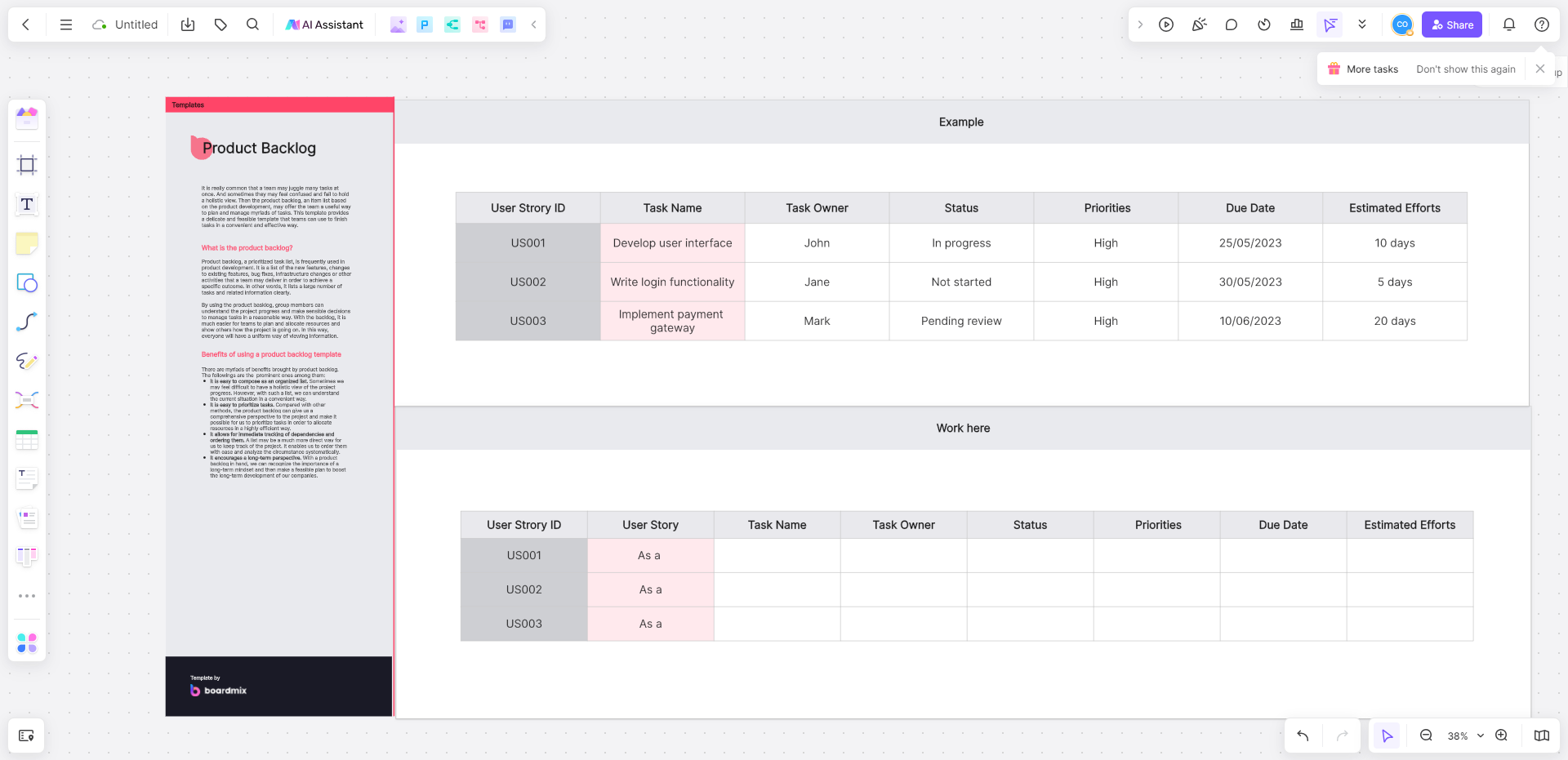
Remember that prioritizing a product backlog requires flexibility and adaptability. The sorting process is not absolute but is a process of balance and adjustment to maximize product value.
How to Prioritize Features in Agile Development
In agile development, the priority of features is very important. Here are some methods that can help determine which features to develop first.
1. Value and Workload
Determine the value and workload of each feature. Features with high value and low workload should be developed first.
2. Agile Story Mapping
Agile story mapping is a method that helps understand user experiences and prioritize features accordingly. With this method, you can create a visual map to understand how users use the product and determine which features are most important for the user experience.
3. MOSCOW Rule
The MOSCOW rule is a commonly used feature priority method, divided into four categories: Must have, Should have, Could have, and Won't have. This can help the team clarify which features are crucial for product success, and which ones can be postponed or omitted.
4. Determine Priority with RICE Scoring Method
RICE stands for Reach, Impact, Confidence, and Effort. Each feature will get a total score based on these four factors, with the highest-scoring features developed first.
5. User Voting
Having your users or customers vote on features is also a common method. This not only helps the team understand what users want but also makes users feel their impact on the product.

With these methods, you can more effectively determine which features should be prioritized for development to better meet user needs and achieve business goals during agile development.








